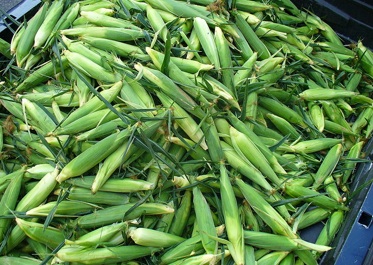
Features
Fruit
Production
Insects affected more by insecticides than by engineered crops
December 15, 2008 By USDA Agricultural Research Service
 December 11, 2008 — Non-target
December 11, 2008 — Non-target
insects are probably affected more by conventional insecticides than by
crops that contain genes from the soil bacterium Bacillus thuringiensis
(Bt), according to the findings of a study by Agricultural Research
Service (ARS) scientists and cooperators.
December 11, 2008 — Non-target insects are probably affected more by conventional insecticides than by crops that contain genes from the soil bacterium Bacillus thuringiensis (Bt), according to the findings of a study by Agricultural Research Service (ARS) scientists and cooperators.
 Bt crops, such as corn, are genetically engineered to produce insect-specific toxins. They target specific insect pests, but the researchers wanted to determine how these crops influence non-target insects in the environment.
Bt crops, such as corn, are genetically engineered to produce insect-specific toxins. They target specific insect pests, but the researchers wanted to determine how these crops influence non-target insects in the environment.
To find out, scientists from ARS collaborated with researchers at the University of Nebraska at Omaha, Iowa State University and the U.S. Environmental Protection Agency. Steven Naranjo, a research leader at the ARS Arid Land Agricultural Research Center in Maricopa, Ariz., and Jonathan Lundgren, an entomologist at the ARS North Central Agricultural Research Laboratory in Brookings, S.D., contributed to the work.
The scientists compared the abundance of groups of non-target insects. They first compared the abundance of these insects in Bt crops and non-Bt crops without any insecticides. They also compared the insect populations in both types of crops treated with insecticides. And they compared the non-target insect populations in Bt crops without insecticides versus the populations in non-Bt crops treated with insecticides.
They formed these groups of non-target insects with data drawn from a modified version of a public database created by Santa Clara University biologist Michelle Marvier and colleagues. The toxins examined included Cry1Ab and Cry3Bb in maize, Cry3A in potato and Cry1Ac and Cry1Ab in cotton.
The researchers observed considerable variability in the effects of Bt cotton and maize crops on non-target insects. However, the data within the groups were fairly consistent. The most influential factor was the insecticide applied. Collectively, insecticides such as pyrethroids, organophosphates, carbamates and neonicotinoids had larger negative impacts on non-target insects than did the Bt crops.
The researchers concluded that when it comes to killing non-target insects, no treatment at all has the least impact. Bt crops have considerably less impact on non-target insects than do conventional insecticides. Also, insecticides affect insect populations uniformly, regardless of whether they're in Bt or non-Bt crop fields.
The findings were published recently in Public Library of Science ONE.
Print this page